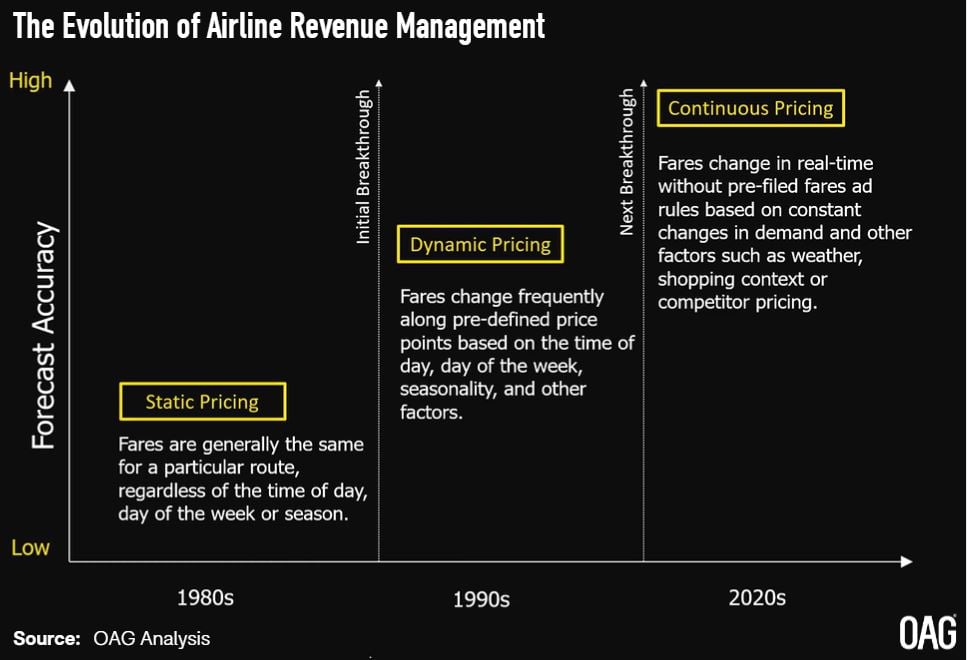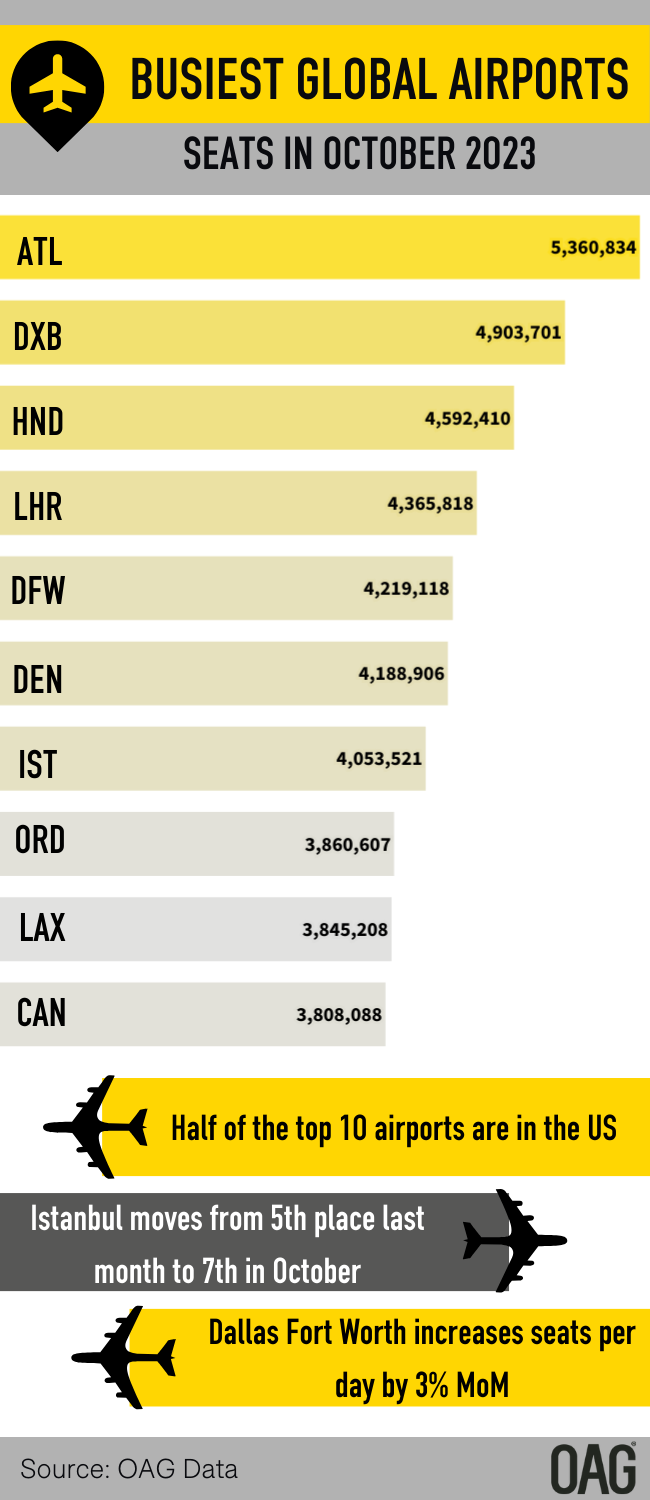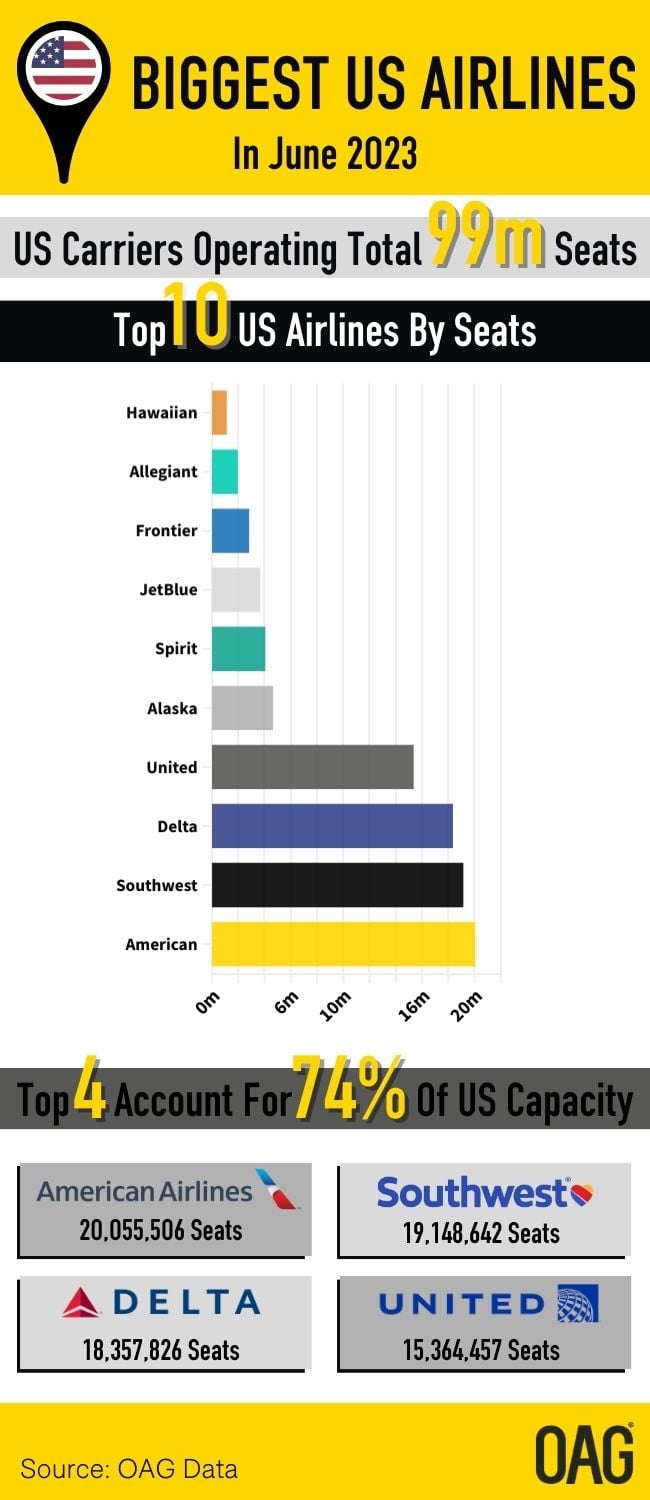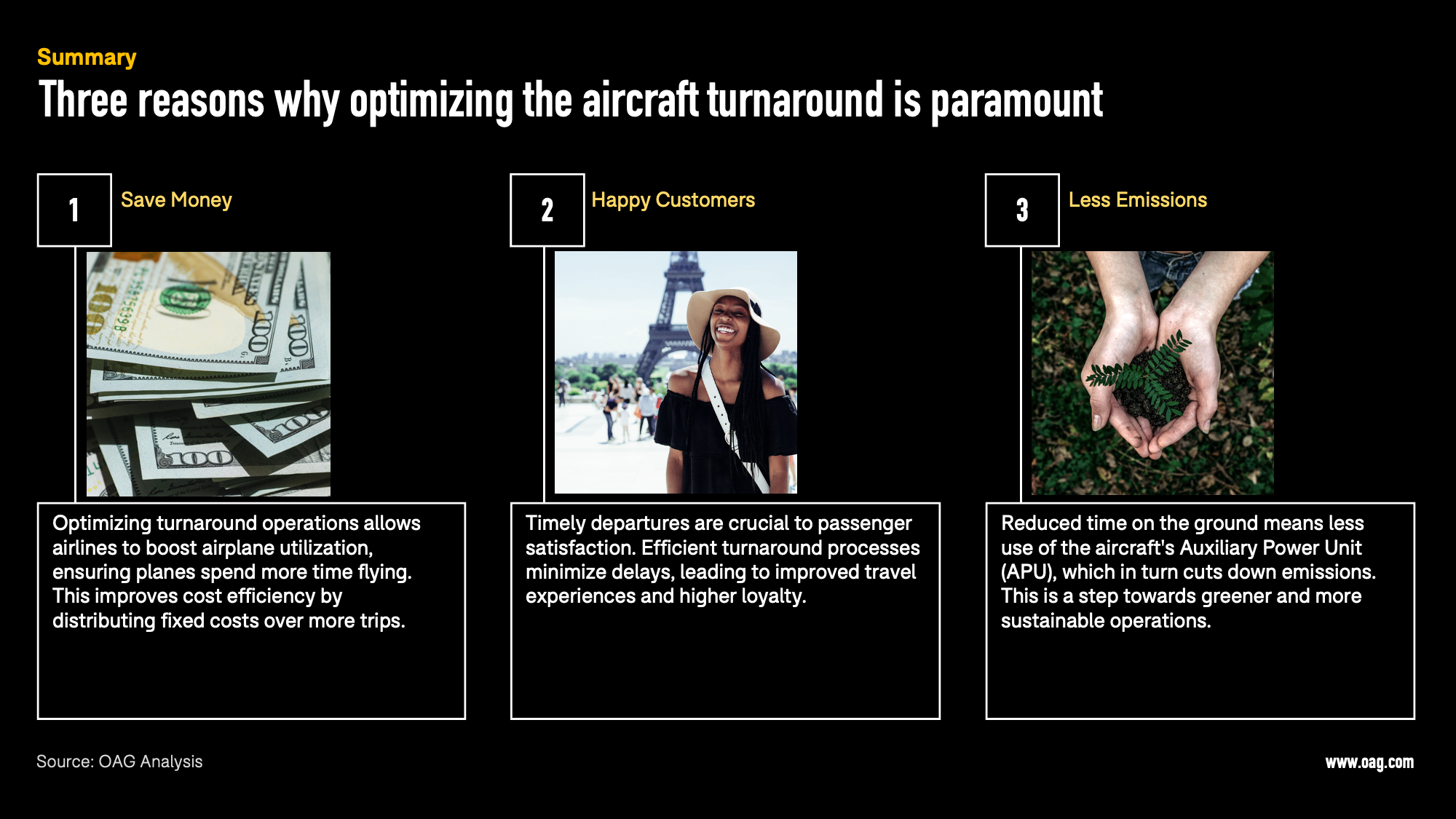What mattered most to aviation industry professionals last year? Since we at OAG live and breathe data, we’ve highlighted some numbers and statistics from 2023’s most popular aviation analysis, infographics and airline and travel technology news. Our most popular content tells the stories of the year and provides insight into what 2024 may hold.
30%: The Improvement in demand forecasting ability seen by SAS when using a new revenue forecast model

This is just one example of an airline using new technology to improve its revenue management systems. From pricing to inventory control, revenue management plays a critical role in ensuring that airlines maximize their profits and in our article, ‘The Evolution of Airline Revenue Management: The Impact of Emerging Technologies’, we look at how airline revenue managers are refreshing and improving their approach using new tech.
This article formed part of a series on the technology shift taking place in the aviation industry: ‘From Old to New: The System Transition in the Airline Industry’.
15,332: The great circle distance, in kilometers, of the world’s longest commercial flight in 2023
In the Winter 2023-24 season, the route between New York’s JFK Airport and Singapore Changi is top of our list of the longest routes flown by a commercial airline, taking an average of 18 hours 40 minutes to complete the 15,332km journey. Long-haul travel was slower to return after the pandemic, but we’re likely to see the longest flight record broken in 2025 when Qantas plans to operate flights from New York to Sydney using a specially designed Airbus A350.
96%: On a LHR-DXB A380 flight, 96% of the total fuel burned was used up during the cruising stage of the flight
Endeavoring to find out which part of a flight uses the most fuel, our analysts looked at a selection of flights on a single day, all departing from London Heathrow Airport (LHR) to a range of destinations, using different aircraft, operated by different airlines and of varying flight lengths. They found that cruising accounts for the majority of fuel burn on most flights, though of course the proportional contribution of taxiing out, take off, climb, approach and taxi in are not insignificant for short-haul flights.
3 in 4: Around ¾ airports now invest in biometric technology
The pandemic increased appetite for contactless airport experiences, and biometric screening is able to fulfil that requirement. Paper-based identification may soon be a thing of the past. In ‘Biometrics at the Airport: Why the Travelsphere’s Future is Digital‘ we uncover the rise of airport biometrics, and highlight how they can improve efficiency, security and traveler experience.
5/10: As IATA’S SUMMER SEASON DREW TO A CLOSE HOW MANY OF THE TOP 10 BUSIEST INTERNATIONAL AIRPORTS WERE IN THE US?

Our most popular infographic of the year highlighted the busiest airports in the world (based on scheduled capacity) in the month of October, half of which were located in the USA. Sitting at the top the list (as it has all year) was Atlanta’s Hartsfield Jackson airport, while Denver, Dallas Forth Worth, Chicago O’Hare and LAX also factored.
157,000+: The number of industry-standard MCTs and airline-specific exceptions handled by OAG
As part of our ‘Insider’s Guide’ series, our team took a deep dive into Minimum Connection Times (MCTs). In this article, we explain what MCTs are, how industry standards are decided upon, and the crucial role MCTs play in ensuring efficient air travel.
91 Million: The Number of Seats Being Operated by the Top Ten US Airlines as We Reached the Mid-Year Mark

In June 2023 we looked at the biggest airlines in the US and found that the top 10 were operating 91 of the 99 million seats in the schedule for the month. The Big Four – United, Delta, Southwest and American – accounted for 74% of all US airline capacity, a total of just under 73 million between them.
1,600km: The distance shaved off a flight from London Heathrow to Shanghai when connecting at Helsinki instead of Hong Kong
How does this work? It’s all to do with Great Circle Routes, which are fundamental to understanding how airplanes fly between two points. The earth, as we know, is not flat, so a straight, point-to-point route as we perceive it on a 2D map is not the quickest way to get from one airport to another. This blog goes into detail on how Great Circle Routes are determined and which airports benefit from them.
75+: The number of people typically involved in an aircraft turnaround

It’s a process that revolves around swift yet organized coordination and the efficient handling of both planned and unplanned events. Why is minimizing turnaround times of paramount importance? In ‘Innovative Airline Operations: The Turnaround’ we outline the three main reasons and uncover some of the cutting-edge technologies helping to perfect turnaround times.
55%: The share of travelers planning “off-grid” style vacations
Early in the year, we reviewed travel trend reports to identify the behaviors shaping global travel. We found that travelers were being driven by a desire to visit off-the-beaten-track locations, and at off-peak times. Hyper-climate awareness was another key theme. Based on this, we developed a set of recommendations for Online Travel Agents (OTAs), and researched some of the OTAs already making good progress toward meeting consumers’ new demands.
To stay up-to-date with all the latest data, analysis and industry insight from OAG, subscribe to receive an alert when a new story is published using the form below.






